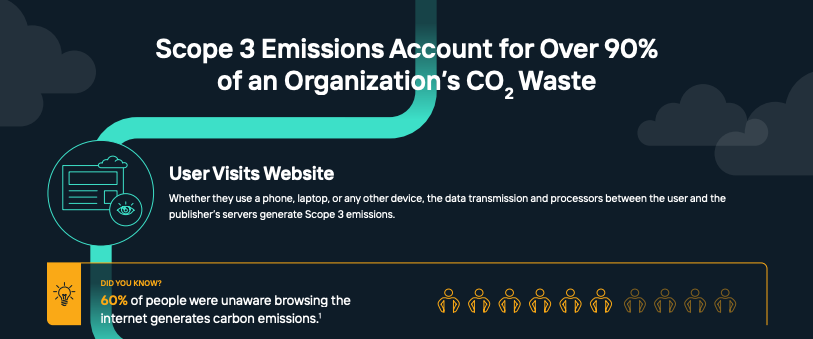
Environmental sustainability has become a global priority amongst many industries. With research on how our carbon footprint has affected the environment, everyone has begun to reassess how they can make their workflows more sustainable.
A recent study by Sharethrough provides a substantial explanation of how the ad tech industry can improve its own CO2 emissions.
Frank Maguire, VP of strategy and insights at Sharethrough, asserts that it has been challenging to determine precisely how it is causing pollution within the industry. Many have believed that the ad tech industry’s carbon footprint is nearly non-existent. On the other hand, the infographic seeks to educate the causes of pollution and what steps the industry can take to improve.
“As a nascent and complex initiative, it can be difficult to determine the sources of pollution in ad tech and how carbon emissions are generated in the first place,” says Maguire. “That’s why we created this infographic to help brands and agencies understand how the programmatic supply chain generates CO2 emissions and what they can do to lower their carbon footprint.”
The Scope of Sustainability
The study showcases three types of carbon emissions designated as Scopes 1-3. Many brands, agencies, and vendors can fall under multiple scopes.
As mentioned in the slide, Scope 1 emissions are generated by the company’s facilities and vehicle use, and Scope 2 emissions are generated by the energy required to power the properties of Scope 1. For Scope 3, emissions are harder to analyze because the company’s supply chain generates them.
In contrast to print, digital media usually falls under the more sustainable category. Yet, most of the ad tech industry’s carbon emissions fall under the Scope 3 guidelines. The study maintains that this is a consequence of the servers, processing, and transmission of data through the programmatic supply chain. The amount of energy required for this operation generates CO2 waste.
The Carbon Waste Domino Effect
While internet use does generate carbon emissions, the infographic attests that “we’ve become so reliant on the internet that simply reducing our content consumption isn’t a viable solution to becoming environmentally sustainable.”
According to the study, the domino effect starts when a user lands on a publisher’s page. From there, the programmatic supply chain begins to emit carbon like a chain reaction.
After that, CO2 waste is generally attributed to the bid request process and ad campaign delivery. Each request in the bid stream requires transmitting massive amounts of data between publishers, SSPs, DSPs, and many other vendor servers. In addition, the more companies a publisher or advertiser utilizes in the programmatic supply chain; the more carbon emissions are generated through the bid stream.
In terms of delivering ad campaigns, the amount of Scope 3 emissions are dependent upon a couple of factors:
- Larger file sizes generate more carbon waste.
-
-
- For example, video ads will emit more CO2 than display ads.
-
- The specific device the ads are displayed on will also factor in how much carbon waste is generated during the campaign.
-
- More powerful devices, such as desktop computers or laptops, create more carbon waste than mobile devices or Connected TVs (CTV.)
Ad Tech’s Sustainable Future
To begin the process of decarbonizing the supply chain, Sharethrough has started to implement Green PMP’s. This initiative to decarbonize the digital advertising ecosystem has become the first SSP to offer media with net zero carbon emissions.
In fact, Sharethrough has begun implementing the Green PMPs with some brands and advertisers. Alex Dumont, President, Cossette Media, said, “The Green PMP initiative fits perfectly with Cossette Media’s purpose of Making Media Matter and particularly the importance of building a cleaner and sustainable media ecosystem. We are happy to see a tech company like Sharethrough take leadership on creating a turnkey way for agencies like us to achieve net-zero carbon emissions on our programmatic media buys”.
The process of creating a sustainable digital advertising ecosystem is still only at its fruition. Yet, with a collective effort by the entire ad tech industry, the goal of an environmentally sustainable future is possible.
Read the full infographic here.

